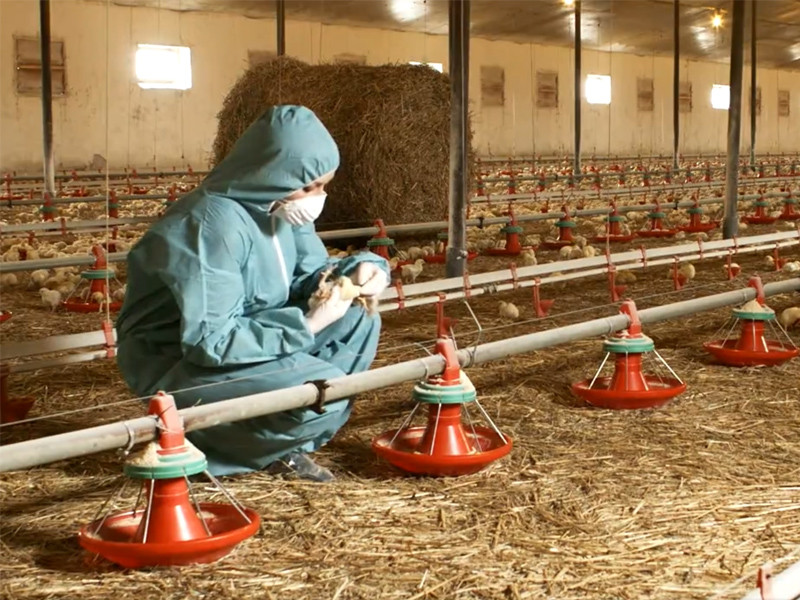Based on epidemiological surveillance conducted by the Ministry of Agriculture and Rural Development, technical staff of the National Service for Health, Safety and Agricultural Products Quality (Senasica) found First case of highly pathogenic AH5 avian influenza this season at a poultry production plant in Cayemé, Sonora.
When the official laboratory in Hermosillo, Sonora reported a positive result for highly pathogenic H5 avian influenza by RT-PCR test, the technical staff of the United States-Mexico Commission for the Prevention of Foot-and-Mouth and Other Animal Diseases (CPA of Senasica ) are mobilized to the area with the aim of diagnosing the situation and taking necessary epidemic prevention measures to curb the spread of the virus.
Among the first measures taken, the Directorate General of Animal Health (DGSA) Announcement of a complete and complete quarantine of affected farms and placing the state of Sonora under internal quarantinewhich means that to mobilize poultry from the entity’s poultry production unit (UPA), a PCR test proving the absence of the disease must be provided.
Likewise, the DGSA reports that necessary tests are currently underway at the Senasica laboratory to obtain more data on the virus affecting this UPA to which hens previously vaccinated with the previous year’s immunogen will be exposed.
Vaccine application
Senasica Strategic use of vaccines will be authorized and will begin in Sonora state.
The vaccination strategy is likely to begin in early November, in areas with high animal health risks and on farms specializing in hens and breeding hens, as they are vital to maintaining chicken and egg production across the country.
Likewise, poultry from areas with high poultry production can be vaccinated at the request of producers who wish to do so, for which they must demonstrate through laboratory studies that their poultry are free of the virus and have access to the services of a veterinarian. Licensed by Senasica.
The Ministry of Agriculture and Rural Development also reported that epidemiological surveillance operations are continuing, If necessary, the national animal health emergency response device will be activated and control actions will be strengthened. And, where appropriate, eradicate the highly pathogenic H5N1 avian influenza A and prevent its spread across the country.
The affected production unit had 90,000 laying hens spread across six houses, one of which contained 15,000 chickens that were culled at 110 weeks of age and were considered end-of-life hens.
During the on-site investigation, official personnel found that there was an irrigation canal 40 meters away from the breeding farm and there were a large number of migratory ducks, so it was necessary to take measures. Take extreme biosecurity measures to avoid new infections.
Senasica recalled that the main preventive measures were strict biosecurity measures on poultry farms, while vaccination was a tool to control the virus. He therefore urged producers to step up on-farm action to protect the country’s poultry production.
The agency noted the need to establish health protocols for those entering the UPA, clean and disinfect all vehicles; use sanitary mats at the main entrance and in each chicken house, and inspect flocks daily to identify birds with suggestive clinical signs. Only.
It is also important that sick or dead birds are not moved and must be isolated or, where appropriate, sanitized; excreta is heat treated above 56°C; facilities, materials and equipment are regularly cleaned and disinfected; consider Set up a sanitary vacuum period between each production cycle and implement procedures to control wildlife and eliminate pests, such as placing bird nets.

